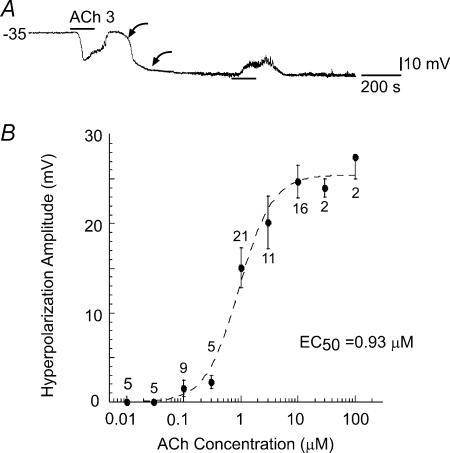Figure 1. Acetylcholine causes a hyperpolarization in cells with a low resting potential.
A, ACh (3 μm) induced a hyperpolarization in a cell that initially had a low resting potential (less negative than −60 mV; Jiang et al. 2001a), but caused a depolarization after the cell shifted (between two curved arrows) to a high resting potential. B, the amplitude–concentration plot of ACh-hyperpolarization fitted with Michaelis-Menten equation reveals an EC50 of 0.93 μm.

